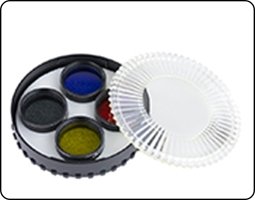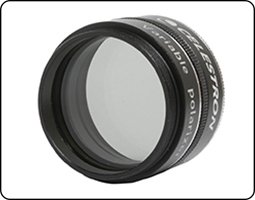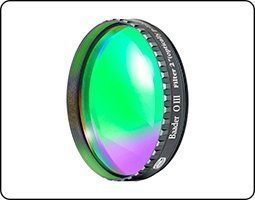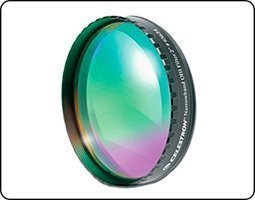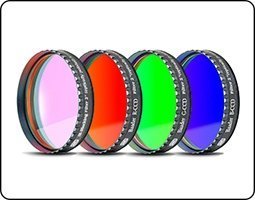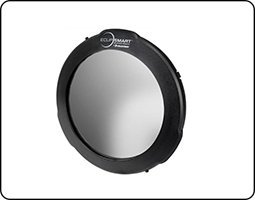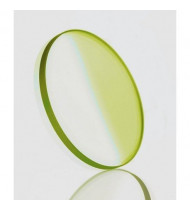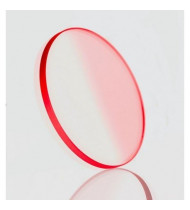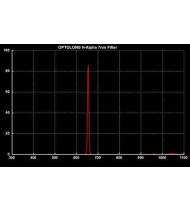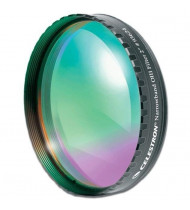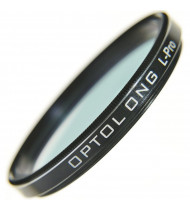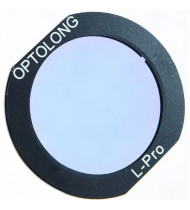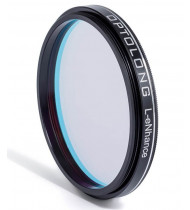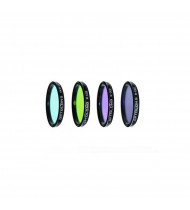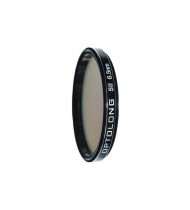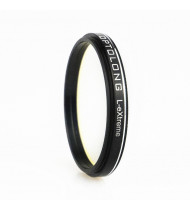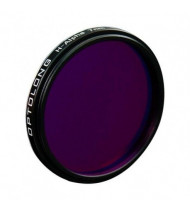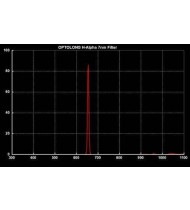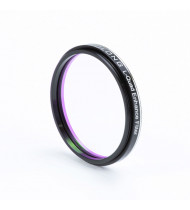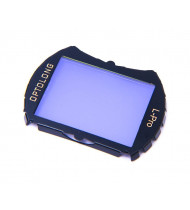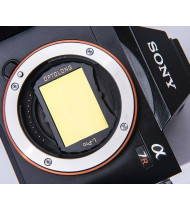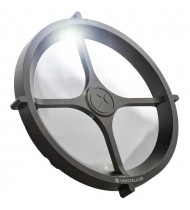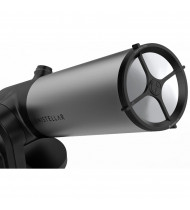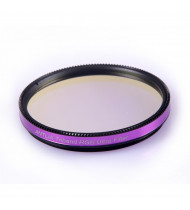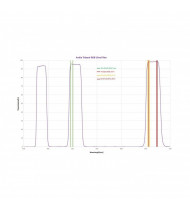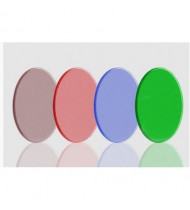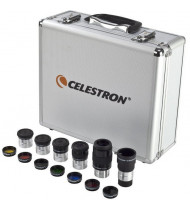

Optolong OIII Filter 6,5nm 36mm
US$ 153.48Extra Narrowband OIII-CCD 6.5nm filter is designed for nebula observation allowing 6.5nm bandwidth of light centered on a wavelength of 500nm through, which corresponds to OIII emission lines, and reducing the transmission of certain wavelengths of light, specifically those produced by artificial light including mercury vapor, and both high and low pressure sodium vapor lights and the unwanted natural light caused by neutral oxygen emission in our atmosphere (i.e. skyglow).
Optolong H-Alpha 7nm 36mm
US$ 153.48The H-ALPHA 7nm filter is the most popular narrow-band filter that allows a 7nm bandwidth centered on a 656nm wavelength.
Celestron Oxygen III Filter 50.8mm (2")
US$ 165.76- The 2" OIII narrowband filter isolates the two doubly-ionized oxygen lines (496 and 501 nm lines)
- Filter has ultra-hard, vacuum-deposited coating
- Eliminates un-natural colored halos surrounding bright stars
Optolong L-Pro Filter 2"
US$ 166.64The L-Pro CCD filter improves the contrast of deep-sky objects and reduces the sky background.
- blocks UV and IR (700 - 1100 nm)
- high transmission at passband
- improved color balance for DSLRs and One-Shot Color Astro Cameras, e.g. ASI Color Cameras cooled or uncooled by ZWO.
- high optical quality
- in 2" filter cell
- The L-Pro Nebula filter permits roughly 3x longer exposure times than without a filter and therefore improves contrast significantly.
- The L-Pro CCD filter improves the contrast of deep-sky objects and reduces the sky background.
Optolong L-eNhance Light Pollution Filter 2"
US$ 174.53L-eNhance 2" Optolong filter (M28x0.75) 50.8mm - Recommended for: shooting in double pass band (H-Alpha, OIII and H-Beta) with CMOS or CCD color cameras or DSLR
Optolong L-eNhance Canon EOS Clip Filter
US$ 183.30EOS Clip version of the famous L-eNhance filter by Optolong
Optolong L-eNhance is a dual-band pass filter which has been designed for DSLR (digital SLR), color CMOS and monochrome CCD cameras. The convenience and cost effectiveness of this filter allows amateurs to image a rich selection of astronomical images, even in bright, heavily light-polluted areas. It effectively isolates the H-Alpha, H-Beta, and Oxygen III nebula emission lines and achieves a maximum transmission of up to 90%. The performance of this filter delivers superb images.Optolong Kit L-RGB 1,25" (31.8mm)
US$ 188.57The LRGB filter kit is designed for maximum contrast and with extremely high gradients for a clear differentiation of light colors
Optolong SII Filter 6.5nm 2" (50.8mm)
US$ 197.34Extra narrowband SII-CCD 6.5nm filter (Sulful II for CCD) is designed for nebula observation allowing 6.5nm bandwidth of light centered on a wavelength of 672nm through, and reducing the transmission of certain wavelengths of light, specifically those produced by artificial light including mercury vapor, and both high and low pressure sodium vapor lights and the unwanted natural light caused by neutral oxygen emission in our atmosphere (i.e. skyglow).
Optolong OIII Filter 6,5nm 2" (50.8mm)
US$ 197.34Extra Narrowband OIII-CCD 6.5nm filter is designed for nebula observation allowing 6.5nm bandwidth of light centered on a wavelength of 500nm through, which corresponds to OIII emission lines, and reducing the transmission of certain wavelengths of light, specifically those produced by artificial light including mercury vapor, and both high and low pressure sodium vapor lights and the unwanted natural light caused by neutral oxygen emission in our atmosphere (i.e. skyglow).
Optolong L-eXtreme Filter 1.25" (31.8mm)
US$ 200.84The advantage of the L-eXtreme filter is that there is no transmission between the H-beta and OIII lines, as there is no nebula emission lines there. In this case, it isn't letting light pollution come through so that maximize nebulas signal and make the sky background darker while imaging. The L-eXtreme filter should better isolate the emission lines only and better protect from light pollution.
Optolong H-Alpha 7nm 2" (50.8mm) v.2
US$ 200.84The H-ALPHA 7nm filter is the most popular narrow-band filter that allows a 7nm bandwidth centered on a 656nm wavelength.
Optolong L-QEF L-Quad Enhance Filter 2"
US$ 209.61L-QEF eliminates light pollution caused by mercury and sodium lamps and produces a broadband image with minimal color cast. This filter is broadband and suppresses wavelengths of light pollution. It is great for star clusters, dark and reflection nebulae, as well as galaxies in skies affected by light pollution.- The L-Pro CCD filter improves the contrast of deep-sky objects and reduces the sky background.
Unistellar Solar Filter
US$ 218.39Smart solar filter which works with all Unistellar telescopes
- Unlock the secrets of Solar Activity
- Observe the Sun in less than 2 Minutes
- Safely Experience With Your Family
- A new solar experience available on UNISTELLAR App (iOS & Android)
- Witness once-in-a-lifetime solar events
Antlia RGB Triband 2" Filter
US$ 227.16Anti-pollution filter effectively isolates the emission lines not only of emission nebulae but also of galaxies, clusters or globular clusters and reaches a maximum transmission of up to 97%.Optolong Kit LRGB 36mm
US$ 235.93The LRGB filter kit is designed for maximum contrast and with extremely high gradients for a clear differentiation of light colors
Celestron Eyepiece and Filter Kit 1.25"
US$ 244.70Five quality Plossl eyepieces, a 2X Barlow Lens, six colored filters to improve observations of the planets, a Moon filter, and a foam-fitted aluminum carry case with extra room to grow

